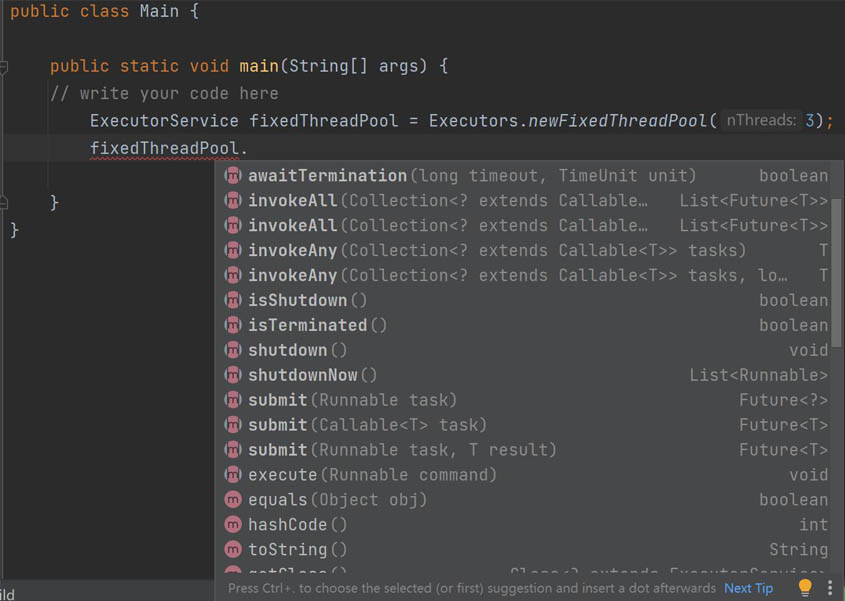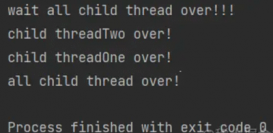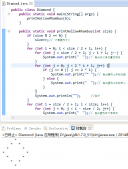jdk线程池ThreadPoolExecutor的7个参数
|
1
2
3
4
5
6
7
8
9
10
11
12
13
14
15
16
17
18
19
20
21
22
23
24
|
public ThreadPoolExecutor(int corePoolSize, int maximumPoolSize, long keepAliveTime, TimeUnit unit, BlockingQueue<Runnable> workQueue, ThreadFactory threadFactory, RejectedExecutionHandler handler) { if (corePoolSize < 0 || maximumPoolSize <= 0 || maximumPoolSize < corePoolSize || keepAliveTime < 0) throw new IllegalArgumentException(); if (workQueue == null || threadFactory == null || handler == null) throw new NullPointerException(); this.acc = System.getSecurityManager() == null ? null : AccessController.getContext(); this.corePoolSize = corePoolSize; this.maximumPoolSize = maximumPoolSize; this.workQueue = workQueue; this.keepAliveTime = unit.toNanos(keepAliveTime); this.threadFactory = threadFactory; this.handler = handler; } |
corePoolSize
核心线程个数 ,int类型
maximunPoolSize
最大线程数 ,int类型
keepAliveTime存活时间
传long类型的值,
当线程池中的线程数大于corePoolSize核心线程个数,且线程是闲置状态,则这些空闲线程的最大存活时间是KeepAliveTime
TimeUnit
存活时间的单位, 有时/分/秒/毫秒等可选配置
workQueue
存放待执行任务的阻塞队列, 可传入
arrayBlockingQueue 基于数组的有界阻塞队列;
linkedBlockingQueue基于链表的无界阻塞队列;
synchronousQueue最多只有1个元素的同步队列, 队列容量是1;
priorityBlockingQueue带优先级的无界阻塞队列,出队元素是优先级最高或最低的元素;
DelayQueue 带延迟功能的无界阻塞队列, 过期元素才会出队,队头元素是快要过期的元素.
以上几个Queue都是BlockingQueue的实现类
threadFactory
创建线程的工厂,
jdk提供了DefaultThreadFactory默认工厂,
用Executors.defaultThreadFactory()就行.
RejectedExecutionHandler拒绝策略
当队列满且线程数达到maximunPoolSize最大线程数后采取的策略, 可传入
AbortPolicy 抛出异常,这个是默认策略.
CallersRunPolicy 由调用者所在的线程执行任务
DiscardOldestPolicy 丢弃最老的任务
DiscardPolicy 丢弃新任务,不抛出异常
jdk提供的Executors快速创建线程池的用法
jdk封装了一个Executors类可以直接创建各种线程池,
用法形如
|
1
|
ExecutorService pool = Executors.newXXXXXPool() |
可以用Executors类创建业务常用的3种线程池
固定线程池
|
1
2
3
4
5
|
public static ExecutorService newFixedThreadPool(int nThreads) { return new ThreadPoolExecutor(nThreads, nThreads, 0L, TimeUnit.MILLISECONDS, new LinkedBlockingQueue<Runnable>()); } |
创建一个核心线程数和最大线程数相同的线程池,都为nThreads,
且线程池的阻塞队列长度是Integer.MAX_VALUE,
且keepAliveTime=0,说明只要线程个数比核心线程个数多并且当前空闲则回收.
单线程线程池
|
1
2
3
4
5
6
|
public static ExecutorService newSingleThreadExecutor() { return new FinalizableDelegatedExecutorService (new ThreadPoolExecutor(1, 1, 0L, TimeUnit.MILLISECONDS, new LinkedBlockingQueue<Runnable>())); } |
创建一个核心线程数和最大线程数都是1的线程池,
且线程池的阻塞队列长度是Integer.MAX_VALUE,
且keepAliveTime=0,说明只要线程个数比核心线程个数多并且当前空闲则回收.
已缓存的线程池
|
1
2
3
4
5
|
public static ExecutorService newCachedThreadPool() { return new ThreadPoolExecutor(0, Integer.MAX_VALUE, 60L, TimeUnit.SECONDS, new SynchronousQueue<Runnable>()); } |
创建一个按需创建线程的线程池,初始线程个数为0,最多线程个数为
Integer.MAX_VALUE,并且阻塞队列为同步队列.
keepAliveTime=60,说明当前线程在60s内空闲则回收.
CachedThreadPool的特殊之处在于,加入同步队列的任务会被马上执行,同步队列里边最多只有1个任务.
使用创建好的ExecutorService 线程池执行异步任务

submit操作
提交一个任务, 任务参数可以是 Runnable实现类 或 Callable 实现类.
返回的类型是Future 表示异步计算的结果, 可以用future.get()方法拿到数据.
shutdown操作
调用shutdown方法后,线程池就不会再接受新的任务了,但是工作队列里边的任务还是要执行的, 该方法会立刻返回,不等待队列任务完成再返回.
使用线程池的情况下当程序结束时记得调用shutdown关闭线程池, 如果不关闭线程池,则会导致 线程池资源一直不被释放.
shutdownNow操作
调用shutdownNow方法后,线程池就不会再接受新的任务了,并且会丢弃工作队列里边的任务,正在执行的任务会被中断,该方法会立刻返回,并不等待激活的任务执行完成. 返回值为这时候队列里面被丢弃的任务列表.
awaitTermination操作
当线程调用awaitTermination方法后,当前线程会被阻塞, 直到线程池状态变为TERMINATED 才返回,或者等待时间超时才返回.
案例1-测试FixedThreadPool执行CallableTask任务
|
1
2
3
4
5
6
7
8
9
10
11
12
13
14
15
16
17
18
19
20
21
22
23
24
25
26
27
28
29
30
31
32
33
34
35
36
37
38
39
40
|
package cn.demo;import cn.hutool.core.util.RandomUtil;import java.util.concurrent.ExecutionException;import java.util.concurrent.ExecutorService;import java.util.concurrent.Executors;import java.util.concurrent.Future;public class ExecutorTestsForCallableTask { public static void main(String[] args) throws ExecutionException, InterruptedException { String res1 = ""; String res2 = ""; String res3 = ""; String res4 = ""; ExecutorService fixedThreadPool = Executors.newFixedThreadPool(3); //submit 提交4个任务, 实际执行时,任务是并发执行的,执行顺序不固定 Future<String> submit1 = fixedThreadPool.submit( new TestCallableTask(RandomUtil.randomInt(30,1000),"t1")); Future<String> submit2 = fixedThreadPool.submit( new TestCallableTask(RandomUtil.randomInt(100,400),"t2")); Future<String> submit3 = fixedThreadPool.submit( new TestCallableTask(RandomUtil.randomInt(30,350),"t3")); Future<String> submit4 = fixedThreadPool.submit( new TestCallableTask(RandomUtil.randomInt(310,500),"t4")); res1 = submit1.get(); System.out.println(res1); res2 = submit2.get(); System.out.println(res2); res3 = submit3.get(); System.out.println(res3); res4 = submit4.get(); System.out.println(res4); fixedThreadPool.shutdown(); }} |
|
1
2
3
4
5
6
7
8
9
10
11
12
13
14
15
16
17
18
19
20
21
22
23
24
25
26
27
28
29
30
31
32
33
34
35
36
37
38
39
|
package cn.demo;import cn.hutool.core.util.RandomUtil;import java.time.LocalDateTime;import java.util.concurrent.Callable;public class TestCallableTask implements Callable<String> { private int testIntVal; private String taskSeq; public TestCallableTask(int testIntVal, String taskSeq) { this.testIntVal = testIntVal; this.taskSeq = taskSeq; } @Override public String call() throws Exception { String s = LocalDateTime.now().toString(); System.out.println(s+"->"+taskSeq+" run ...."); int i = testIntVal; System.out.println(i); try { Thread.sleep(RandomUtil.randomInt(100,300)); } catch (InterruptedException e) { e.printStackTrace(); } if (i>300){ return "300more"; }else { return "300less"; } }} |
案例2-测试FixedThreadPool执行RunnableTask任务
|
1
2
3
4
5
6
7
8
9
10
11
12
13
14
15
16
17
18
19
20
21
22
23
24
25
26
27
28
29
30
31
32
33
34
35
36
37
38
39
40
41
42
43
44
45
46
47
48
49
|
package cn.demo;import java.util.concurrent.*;public class ExecutorTestsForRunnableTask { public static void main(String[] args) throws ExecutionException, InterruptedException { String res1 = ""; String res2 = ""; String res3 = ""; String res4 = ""; ExecutorService fixedThreadPool = Executors.newFixedThreadPool(3); //submit 提交4个任务, 实际执行时,任务是并发执行的,执行顺序不固定 Task1Param task1Param = new Task1Param(); task1Param.setUrl("f23r3r"); task1Param.setName("1heg43t34t34t"); Future<String> stringFuture = fixedThreadPool.submit( new TestTask1Runnable(task1Param), "success1 ok"); Task1Param t2 = new Task1Param(); t2.setUrl("gnsg2323"); t2.setName("2wwswer2r1asdaaws"); Future<String> f2 = fixedThreadPool.submit(new TestTask1Runnable(t2), "success2 ok"); Task1Param t3 = new Task1Param(); t3.setUrl("thwasr23r"); t3.setName("3erzawfe23rawsf"); Future<String> f3 = fixedThreadPool.submit(new TestTask1Runnable(t3), "success3 ok"); Task1Param t4 = new Task1Param(); t4.setUrl("mjkdsragt"); t4.setName("4tbertydraewrsfk"); Future<String> f4 = fixedThreadPool.submit(new TestTask1Runnable(t4), "success4 ok"); res1 = stringFuture.get(); System.out.println(res1); res2 = f2.get(); System.out.println(res2); res3 = f3.get(); System.out.println(res3); res4 = f4.get(); System.out.println(res4); fixedThreadPool.shutdown(); }} |
|
1
2
3
4
5
6
7
8
9
10
11
12
13
14
15
16
17
18
19
20
21
22
23
24
25
26
|
package cn.demo;import cn.hutool.core.util.RandomUtil;import java.time.LocalDateTime;public class TestTask1Runnable implements Runnable{ private Task1Param task1Param; public TestTask1Runnable(Task1Param task1Param) { this.task1Param = task1Param; } @Override public void run() { try { Thread.sleep(RandomUtil.randomInt(200,600)); } catch (InterruptedException e) { e.printStackTrace(); } System.out.println(task1Param.getName()); System.out.println(task1Param.getUrl()); String s = LocalDateTime.now().toString(); System.out.println(s+" TestTask1Runnable run ...."); }} |
使用自定义的ThreadPoolExecutor来执行异步任务
|
1
2
3
4
5
6
7
8
9
10
11
12
13
14
15
16
17
18
19
20
21
22
23
24
25
26
27
28
29
30
31
|
package cn.demo;import cn.hutool.core.util.RandomUtil;import java.util.concurrent.*;public class TpeTest { private final static ThreadPoolExecutor pool = new ThreadPoolExecutor( 1,1, 1L, TimeUnit.MINUTES, new ArrayBlockingQueue<Runnable>(1), new ThreadPoolExecutor.CallerRunsPolicy()); public static void main(String[] args) throws ExecutionException, InterruptedException { Future<String> submit1 = pool.submit( new TestCallableTask(RandomUtil.randomInt(30,1000),"t1")); Future<String> submit2 = pool.submit( new TestCallableTask(RandomUtil.randomInt(100,400),"t2")); Future<String> submit3 = pool.submit( new TestCallableTask(RandomUtil.randomInt(30,350),"t3")); Future<String> submit4 = pool.submit( new TestCallableTask(RandomUtil.randomInt(310,500),"t4")); System.out.println("task1-"+submit1.get()); System.out.println("task2-"+submit2.get()); System.out.println("task3-"+submit3.get()); System.out.println("task4-"+submit4.get()); pool.shutdown(); }} |
线程池使用FutureTask时需要注意的事情
线程池使用FutureTask时,如果把拒绝策略设置为 DiscardPolicy 和 DiscardOldestPolicy,并且在被拒绝的任务的Future对象上调用了无参get方法,那么调用线程会一直被阻塞.
如上面的代码,如果把CallerRunsPolicy替换成 DiscardPolicy 或 DiscardOldestPolicy ,就会导致任务一直被阻塞,一直无法取到future.get()的值.
到此这篇关于jdk线程池的实现的文章就介绍到这了,更多相关jdk线程池内容请搜索服务器之家以前的文章或继续浏览下面的相关文章希望大家以后多多支持服务器之家!
原文链接:https://blog.csdn.net/ThinkPet/article/details/129824091














